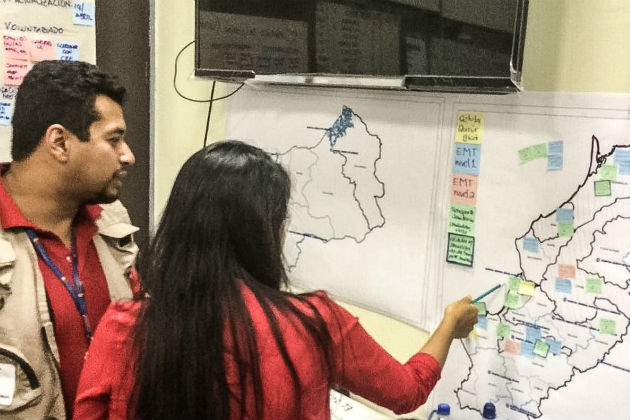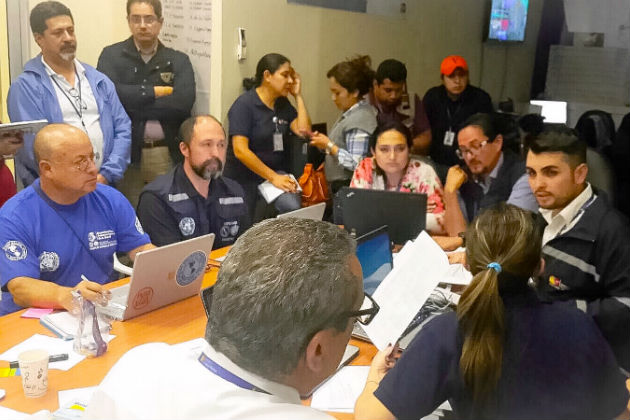Strengthening the coordination of Emergency Medical Teams

Itâs now just over a month since a 7.8-magnitude earthquake struck Ecuador.
Luis De La Fuente, co-coordinator of Ecuadorâs Emergency Medical Team (EMT), paces as he talks on the phone, âWe have 21 national teams and 7 international teams from Colombia, Germany, Spain, Peru and United States on the ground at the moment,â³ he tells Ian Norton, who spearheads WHOâs EMT Initiative in Geneva.
â³We do not foresee a need for additional medical teams at this time. We are working closely with the Ministry of Health to ensure that they are located at strategic locations where there is limited or no access to health,â says De La Fuente, who works at WHOês Regional Office for the Americas and co-led the coordination of the EMTs deployed to respond to the 16 April earthquake.
The earthquake left a trail of destruction. According to Ecuadorâs National Secretariat for Risk Management) by 26 April, 655 people had died. Another 4 500 were injured and more than 30 000 displaced. Damage to infrastructure is extensive. More than over 800 buildings were destroyed, including 25 health facilities.

Building national ownership and leadership
Barely 2 weeks prior to the earthquake, De La Fuente taught over 50 participants from the Ministry of Health during a rigorous 2-day training course led by WHOâs Regional Office for the Americas on the essentials of coordinating EMTs.
Elaborating on the training, Norton explains, "The EMT Coordination Cell training is designed to build local capacity to lead and manage national and international EMTs providing direct medical care in an affected country. Coordinators and other functions of the EMT Coordination Cell are nominated by the country or provided by WHO. They are trained on how mobilize, register, organize the logistical arrangements for their arrival and assign these teams to their locations in a systematic manner.â
This training has supported the Ecuadorian Ministry of Health to mobilize the most appropriate type of EMT and set up their services according to WHOâs recommended standards. These standards are based on lessons learned in the 2010 earthquake in Haiti. Although many medical teams arrived then to save lives, the teams were not well coordinated and many lacked the tools or expertise needed to provide the care that the patients required.
Building a global cadre of coordinators to manage EMTs
To further strengthen the coordination of EMTs, WHO will roll out the EMT Coordination Cell training to 3 regions â Europe, the Americas, and South-East Asia â during 2016. These trained coordinators are critical for providing the necessary leadership and guidance to an expanding pool of national teams and NGOs registered on WHOâs EMT Classification list. The List sets minimum standards for international health workers and allows teams to clearly outline their services and skills.
Since WHO launched the EMT Classification List in July 2015, more than 60 organizations or teams from over 20 countries have applied. The teams are supported and mentored to reach and demonstrate their quality and be verified by WHO and their peers. By mid-2016, WHO expects to have 100 medical teams registered and ready for swift deployment wherever they are next needed.
Through the EMTs Initiative, governments and people a¬ffected by emergencies and outbreaks can be assured of a predictable and timely response by well-trained and self-sufficient medical teams.